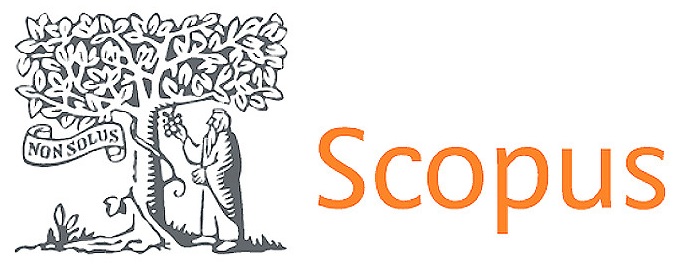Design of an eco-efficiency system for sustainable development in the university context
DOI:
https://doi.org/10.56294/saludcyt2023393Keywords:
Eco-Efficiency, Sustainable Development, Economic Development, Social Development, Environmental DevelopmentAbstract
The main objective of the research is to determine the relationship between the design of an eco-efficiency system and the sustainable development of the Universidad Nacional José Faustino Sánchez Carrión. The study has a quantitative approach, non-experimental design, transectional cut and correlational scope. There was a population of 1304 workers, including teachers and administrative staff, from which a sample of 297 workers was obtained. The information was managed by means of the survey, using the questionnaire as an instrument, whose reliability was 0,971, according to Cronbach's Alpha coefficient, and the validity was 0,91, according to the content validity method carried out by three expert judges. Finally, it was possible to prove that there is an asymptotic significance (p=0,000) lower than the significance level (0,05), with a Spearman's Rho correlation of R= 0,490 considered positive and moderate. In other words, the design of an eco-efficiency system has a direct relationship with the sustainable development of the Universidad Nacional José Faustino Sánchez Carrión. This allowed inferring that such design allows reducing expenses in energy, water, paper and related materials, fuels, as well as adequately managing solid waste, making environmentally sustainable public purchases, promoting a culture of eco-efficiency and using clean technologies. In other words, these actions implemented, thanks to the eco-efficiency design, will improve the sustainable development of the university
References
1. Armesto A. Preocupación por el cambio climático, condiciones económicas individuales y priorización del medioambiente en América Latina. Opinião Pública. 2021;27(1):1-27. https://doi.org/10.1590/1807-019120212711 DOI: https://doi.org/10.1590/1807-019120212711
2. OMS. Nueve de cada diez personas de todo el mundo respiran aire contaminado. 2018. https://www.who.int/es/news/item/02-05-2018-9-out-of-10-people-worldwide-breathe-polluted-air-but-more-countries-are-taking-action
3. Gestión. Lima es la octava ciudad más contaminada de América Latina. 2019. https://gestion.pe/economia/lima-octava-ciudad-contaminada-america-latina-269614-noticia/
4. Martínez García AJ, Estrada Cahuapaza YR, Marín Mamani G, Enríquez Mamani V, Cotacallapa Ochoa KL, Curro Pérez F. Thermal evaluation of a rustic building prototype at 1/5 scale with vegetal envelope during the winter in southern Peru. Data & Metadata. 2023;2:34. https://doi.org/10.56294/dm202334 DOI: https://doi.org/10.56294/dm202334
5. Lueddeckens S. A review on the handling of discounting in eco‑efciency analysis. Clean Technologies and Environmental Policy. 2023(25):3-20. https://doi.org/10.1007/ DOI: https://doi.org/10.1007/s10098-022-02397-9
s10098-022-02397-9
6. MINAM. Conoce a las entidades públicas que fueron reconocidas como "Modelo EcoIP: Edición Bicentenario. 2022. https://www.gob.pe/institucion/minam/noticias/602447-conoce-a-las-entidades-publicas-que-fueron-reconocidas-como-modelo-ecoip-edicion-bicentenario
7. Conte M, D'Elia V. Desarrollo sostenible y conceptos “verdes”. Problemas del desarrollo. 2018;49(192):61-84. DOI: https://doi.org/10.22201/iiec.20078951e.2018.192.59312
8. Naciones Unidas. Objetivos de Desarrollo Sostenible. 2022. https://www.un.org/
sustainabledevelopment/es/objetivos-de-desarrollo-sostenible/
9. González F. Ecoeficiencia. Propuesta de diseño para el mejoramiento ambiental 1ra. ed. México: Editorial Universidad de Guadalajara; 2013.
10. MINAM. Guía de ecoeficiencia para instituciones del sector público. 2016. https://www.gob.pe/
institucion/minam/noticias/602447-conoce-a-las-entidades-publicas-que-fueron-reconocidas-como-modelo-ecoip-edicion-bicentenario
11. MINAM. Anexo DS. 016-2021-MINAM-Disposiciones para la gestión de la ecoeficiencia en las entidades de la administración pública. 2021. https://cdn.www.gob.pe/uploads/document/file/2035591/ANEXO%20DS.%20016-2021-MINAM%20-%20DISPOSICIONES%20PARA%20LA%20GESTION%20DE%20LA%
20ECOEFICIENCIA%20EN%20LAS%20ENTIDADES%20DE%20LA%20ADMINISTRACION%20PUBLICA.pdf.pdf
12. Strange T, Bayley A. Desarrollo sostenible: Integrar la economía, la sociedad y el medio ambiente. 1ra ed. México: Esenciales OCDE, OECD Publishing; 2014. DOI: https://doi.org/10.1787/9789264175617-es
13. Gupta J, Vegelin C. Sustainable development goals and inclusive development. International Environmental Agreements: Politics, Law and Economics. 2016;16(3):433-48. https://doi.org/10.1007/s10784-016-9323-z DOI: https://doi.org/10.1007/s10784-016-9323-z
14. Moore E. Global Prosperity and Sustainable Development Goals. Journal of International Development. 2015;27(6):801-15. https://doi.org/10.1002/jid.3114 DOI: https://doi.org/10.1002/jid.3114
15. Panceri J. Sustentabilidad. Economía, desarrollo y medioambiente. 1ra. ed. Argentina: Editorial Biblos; 2021.
16. Hernández R, Mendoza C. Metodología de la investigación: Las rutas cuantitativa, cualitativa y mixta. 1ra. ed. México: Mc-Graw Hill; 2018.
17. Gusmão R, Freitas R, Veiga L, Gonçalves O, Leal W. Towards sustainable development through the perspective of ecoefficiency - A systematic literature review. Journal of Cleaner Production. 2017;165:890-904. https://doi.org/10.1016/j.jclepro.2017. DOI: https://doi.org/10.1016/j.jclepro.2017.07.166
07.166
18. Cisnero-Piñeiro AL, Fernández Delgado MC, Ramírez Mendoza JA. Trends in scientific production in the Industrial and Manufacturing Engineering area in Scopus between 2017 and 2021. Data & Metadata. 2022;1:6. https://doi.org/10.56294/dm20226 DOI: https://doi.org/10.56294/dm20226
19. Yin L, Liu J. Impact of Environmental Economic Transformation Based on Sustainable Development on Financial Eco-Efficiency. Sustainability. 2023;15(1). https://doi.org/10.3390/su15010856 DOI: https://doi.org/10.3390/su15010856
Published
Issue
Section
License
Copyright (c) 2023 Algemiro Julio Muñoz-Vilela, Flor de María Lioo-Jordan, Luis Alberto Baldeos-Ardian, Santiago Ernesto Ramos Y Yovera , Abrahán Cesar Neri-Ayala, Naylamp Paola Ramos-Oyola (Author)

This work is licensed under a Creative Commons Attribution 4.0 International License.
The article is distributed under the Creative Commons Attribution 4.0 License. Unless otherwise stated, associated published material is distributed under the same licence.



